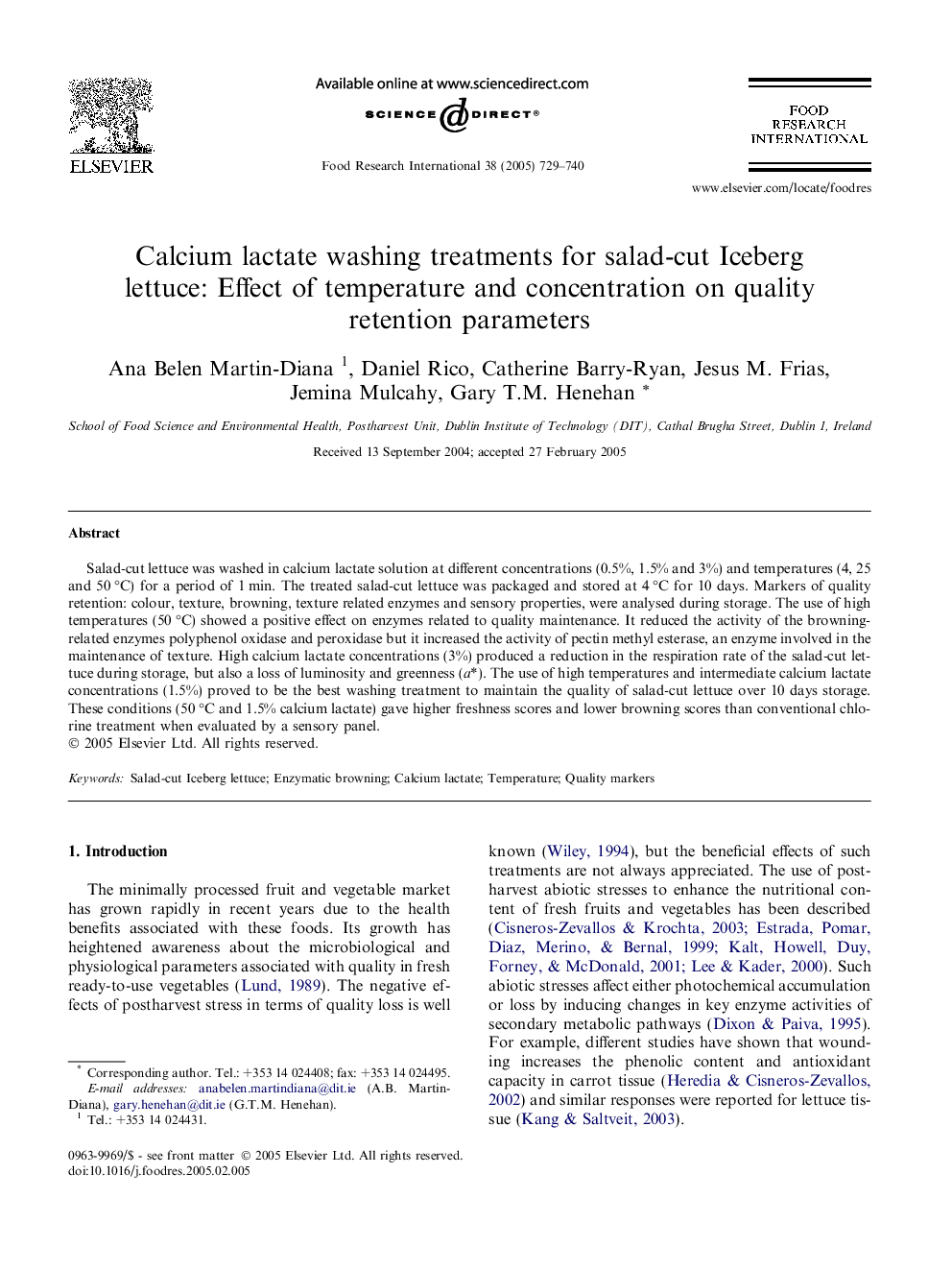| Article ID | Journal | Published Year | Pages | File Type |
|---|---|---|---|---|
| 9487491 | Food Research International | 2005 | 12 Pages |
Abstract
Salad-cut lettuce was washed in calcium lactate solution at different concentrations (0.5%, 1.5% and 3%) and temperatures (4, 25 and 50 °C) for a period of 1 min. The treated salad-cut lettuce was packaged and stored at 4 °C for 10 days. Markers of quality retention: colour, texture, browning, texture related enzymes and sensory properties, were analysed during storage. The use of high temperatures (50 °C) showed a positive effect on enzymes related to quality maintenance. It reduced the activity of the browning-related enzymes polyphenol oxidase and peroxidase but it increased the activity of pectin methyl esterase, an enzyme involved in the maintenance of texture. High calcium lactate concentrations (3%) produced a reduction in the respiration rate of the salad-cut lettuce during storage, but also a loss of luminosity and greenness (a*). The use of high temperatures and intermediate calcium lactate concentrations (1.5%) proved to be the best washing treatment to maintain the quality of salad-cut lettuce over 10 days storage. These conditions (50 °C and 1.5% calcium lactate) gave higher freshness scores and lower browning scores than conventional chlorine treatment when evaluated by a sensory panel.
Related Topics
Life Sciences
Agricultural and Biological Sciences
Food Science
Authors
Ana Belen Martin-Diana, Daniel Rico, Catherine Barry-Ryan, Jesus M. Frias, Jemina Mulcahy, Gary T.M. Henehan,
